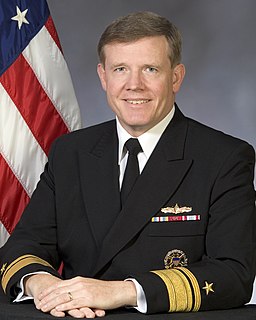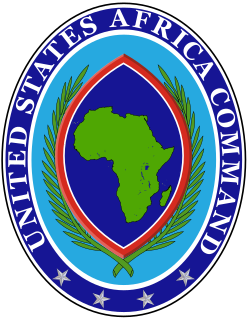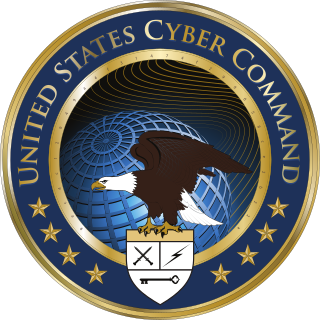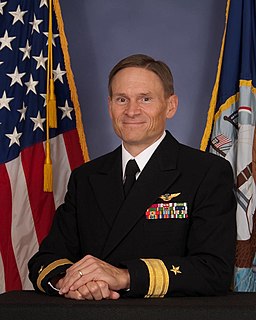Related Research Articles

The United States Army (USA) is the land service branch of the United States Armed Forces. It is one of the eight U.S. uniformed services, and is designated as the Army of the United States in the U.S. Constitution. The oldest and most senior branch of the U.S. military in order of precedence, the modern U.S. Army has its roots in the Continental Army, which was formed 14 June 1775 to fight the American Revolutionary War (1775–1783)—before the United States was established as a country. After the Revolutionary War, the Congress of the Confederation created the United States Army on 3 June 1784 to replace the disbanded Continental Army. The United States Army considers itself to be a continuation of the Continental Army, and thus considers its institutional inception to be the origin of that armed force in 1775.
The United States Armed Forces are the military forces of the United States. The armed forces consists of six service branches: the Army, Marine Corps, Navy, Air Force, Space Force, and Coast Guard. The president of the United States is the commander-in-chief of the armed forces and forms military policy with the Department of Defense (DoD) and Department of Homeland Security (DHS), both federal executive departments, acting as the principal organs by which military policy is carried out. All six armed services are among the eight uniformed services of the United States.

The People's Liberation Army (PLA) is the principal military force of the People's Republic of China and the armed wing of the Chinese Communist Party (CCP). The PLA consists of five service branches: the Ground Force, Navy, Air Force, Rocket Force, and Strategic Support Force. It is under the leadership of the Central Military Commission (CMC) with its chairman as commander-in-chief.
Military doctrine is the expression of how military forces contribute to campaigns, major operations, battles, and engagements.

The defense readiness condition (DEFCON) is an alert state used by the United States Armed Forces.

The United States Army Special Operations Command (Airborne) is the command charged with overseeing the various special operations forces of the United States Army. Headquartered at Fort Bragg, North Carolina, it is the largest component of the United States Special Operations Command. It is an Army Service Component Command. Its mission is to organize, train, educate, man, equip, fund, administer, mobilize, deploy and sustain Army special operations forces to successfully conduct worldwide special operations.

The Goldwater–Nichols Department of Defense Reorganization Act of October 4, 1986Pub.L. 99–433,, made the most sweeping changes to the United States Department of Defense since the department was established in the National Security Act of 1947 by reworking the command structure of the U.S. military. It increased the powers of the chairman of the Joint Chiefs of Staff and implemented some of the suggestions from the Packard Commission, commissioned by President Reagan in 1985. Among other changes, Goldwater–Nichols streamlined the military chain of command, which now runs from the president through the secretary of defense directly to combatant commanders, bypassing the service chiefs. The service chiefs were assigned to an advisory role to the president and the secretary of defense, and given the responsibility for training and equipping personnel for the unified combatant commands.
Network-centric warfare, also called network-centric operations or net-centric warfare, is a military doctrine or theory of war that seeks to translate an information advantage, enabled in part by information technology, into a competitive advantage through the robust computer networking of well informed geographically dispersed forces. It is based on ideas of marshal of USSR Nikolai Ogarkov, set out by him in early 1980s. It was pioneered by the United States Department of Defense in the 1990s.
Principles of war are rules and guidelines that represent truths in the practice of war and military operations.

A unified combatant command (CCMD), also referred to as a combatant command, is a joint military command of the United States Department of Defense that is composed of units from two or more service branches of the United States Armed Forces, and conducts broad and continuing missions. There are currently 11 unified combatant commands and each are established as the highest echelons of military commands, in order to provide effective command and control of all U.S. military forces, regardless of branch of service, during peace or during war time. Unified combatant commands are organized either on a geographical basis or on a functional basis, e.g. special operations, force projection, transport, and cybersecurity. Currently, seven combatant commands are designated as geographical, and four are designated as functional. Unified combatant commands are "joint" commands and have specific badges denoting their affiliation.

Rear Admiral Robert Dunham Reilly Jr. was a United States Navy Surface Warfare Flag Officer who retired from active duty in January 2010 after 34-plus years of military service. His last assignment was as the 24th commander of the U.S. Navy's Military Sealift Command (MSC).
Steven Kent Metz is an American author and professor of national security and strategy at the U.S. Army War College specializing in insurgency and counterinsurgency, American defense policy, strategic theory, the African security environment, and future warfare.

The United States Africa Command, is one of the eleven unified combatant commands of the United States Department of Defense, headquartered at Kelley Barracks, Stuttgart, Germany. It is responsible for U.S. military operations, including fighting regional conflicts and maintaining military relations with 53 African nations. Its area of responsibility covers all of Africa except Egypt, which is within the area of responsibility of the United States Central Command. U.S. AFRICOM headquarters operating budget was $276 million in fiscal year 2012.

Navy Expeditionary Combat Command (NECC) serves as the single functional command to centrally manage current and future readiness, resources, manning, training and equipping of the United States Navy's 21,000 expeditionary forces who are currently serving in every theater of operation. The NECC was established in January 2006. NECC is a subordinate command of the Navy's Fleet Forces Command.
Irregular warfare (IW) is defined in United States joint doctrine as "a violent struggle among state and non-state actors for legitimacy and influence over the relevant populations." Concepts associated with irregular warfare are older than the term itself.

United States Cyber Command (USCYBERCOM) is one of the eleven unified combatant commands of the United States Department of Defense (DoD). It unifies the direction of cyberspace operations, strengthens DoD cyberspace capabilities, and integrates and bolsters DoD's cyber expertise.

Joint Professional Military Education (JPME) is a form of Professional Military Education (PME) in the United States that emphasizes a multiservice approach. Joint Professional Military Education was established following greater awareness during World War II of a need for effective cooperation between the branches of the United States armed forces. While some institutions had previously served to provide joint training, notably the Army and Navy Staff College that operated in the last years of the War, the first senior school for Joint Professional Military Education was founded in 1946 under the direction of the Chairman of the Joint Chiefs of Staff. The 1986 passage of the Goldwater–Nichols Act caused increased interest in Joint Professional Military Education and created a standard. As of 2005, JPME contains five levels, successful completion of two of which are among the qualifications for the designation Joint Service Officer. Joint Professional Military Education levels are available at a number of colleges and JPME Institutions.

The U.S. Marine Corps Forces Cyberspace Command is a functional formation of the United States Marine Corps to protect critical infrastructure from cyberattack. Marine Corps Forces Cyberspace Command is the Marine Corps component to U.S. Cyber Command. It comprises a command element, the Marine Corps Cyber Operations Group, and the Marine Corps Cyber Warfare Group, a total of approximately 800 personnel. MARFORCYBER was established on January 21, 2010 under the command of LtGen George J. Flynn,. As of 7 July 2021, MajGen Ryan P. Heritage is in command.

The United States Special Operations Command is the unified combatant command charged with overseeing the various special operations component commands of the Army, Marine Corps, Navy, and Air Force of the United States Armed Forces. The command is part of the Department of Defense and is the only unified combatant command created by an Act of Congress. USSOCOM is headquartered at MacDill Air Force Base in Tampa, Florida.

Rear Admiral Timothy Stirling Matthews is a former United States Navy admiral. His naval career began in 1982 and spanned almost 32 years. In early 2014, he retired from the Navy and later joined Lockheed Martin, providing aviation sustainment operations support to the US military.
References
- ↑ "NDTAGram" (PDF). Archived from the original (PDF) on 2011-11-04.